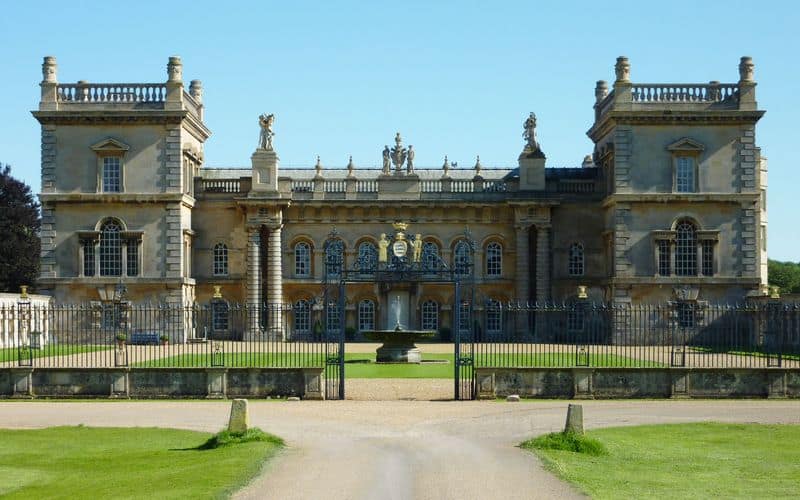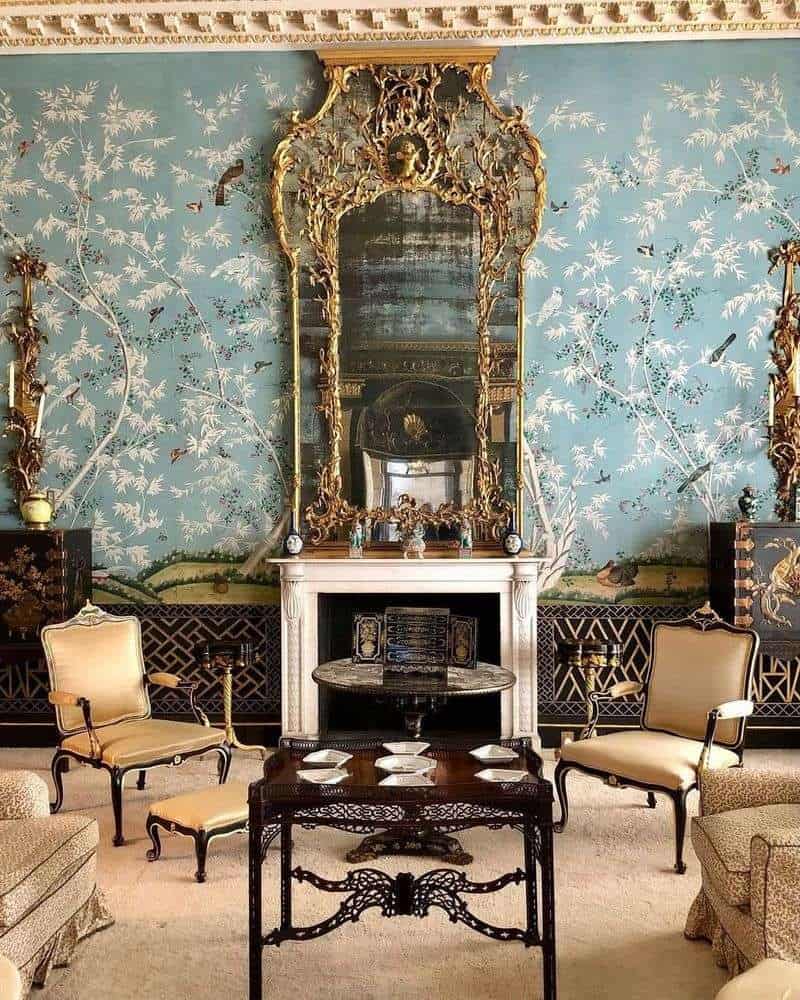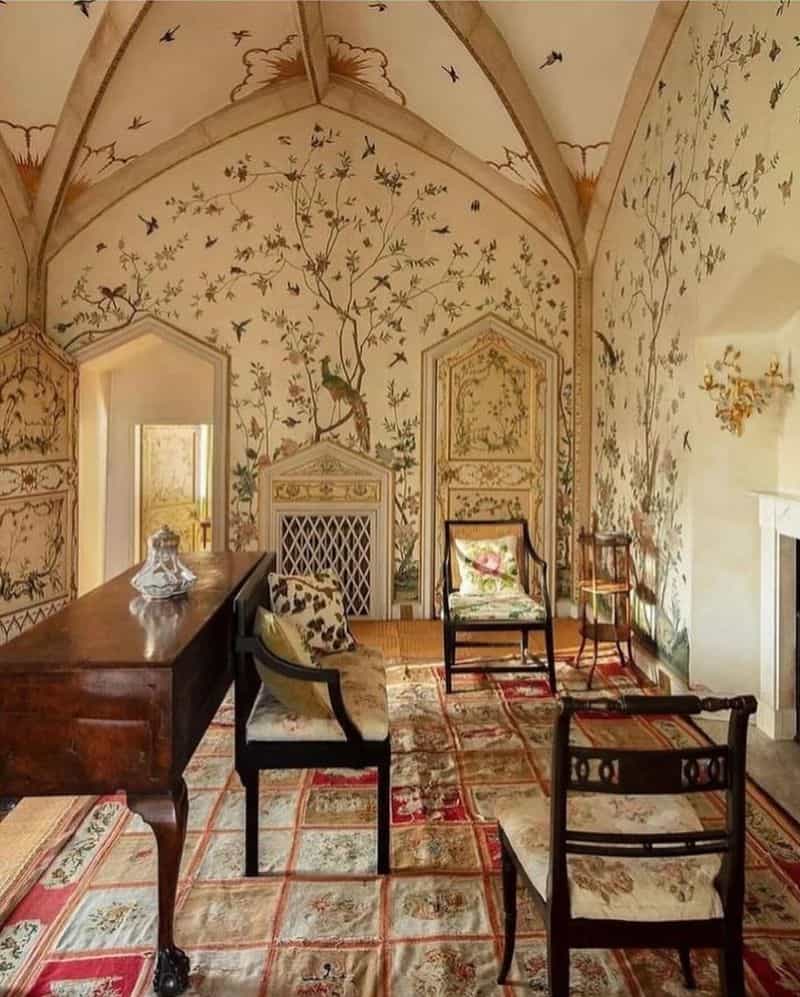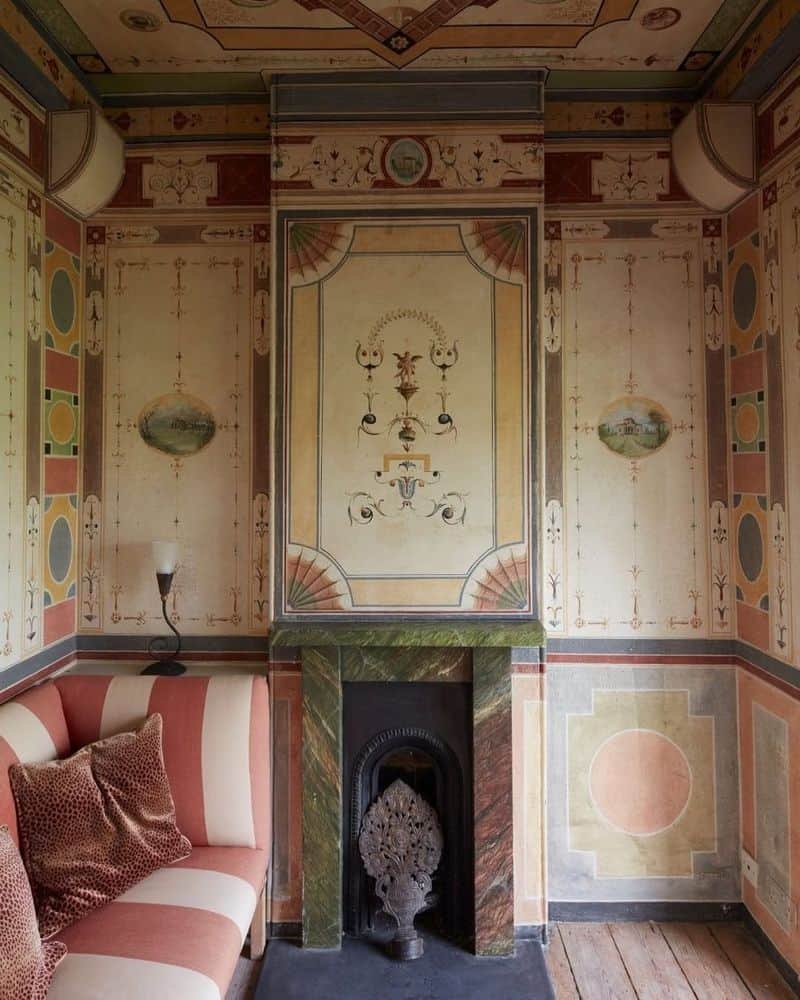Discover the enchanting allure of Grimsthorpe Castle, an architectural treasure nestled in Lincolnshire’s countryside.
This magnificent estate, the brainchild of Sir John Vanbrugh, seamlessly blends Tudor and Baroque styles, all crafted from local golden limestone.
Roaming its vast grounds, you’ll encounter a rich tapestry of history, wildlife, and horticultural beauty.
From its ancient deer park to exquisite interiors, Grimsthorpe invites explorers of all ages to traverse its storied corridors and lush gardens.
Join us as we unveil 10 captivating facts about this historical gem!
1. Architectural Marvel by Sir John Vanbrugh

Grimsthorpe Castle stands as a testament to architectural brilliance, designed by Sir John Vanbrugh.
Known for masterpieces like Blenheim Palace, Vanbrugh infused Grimsthorpe with a blend of Tudor and Baroque styles.
This majestic structure, crafted from golden limestone sourced from nearby quarries, showcases an intricate marriage of design elements.
Each arch and parapet tells a story of grandeur and innovation, making Grimsthorpe an architectural delight.
It’s a place where history and artistry converge, inviting visitors to marvel at its timeless beauty.
2. Majestic Deer Roaming the Estate

The sprawling parkland of Grimsthorpe Castle is home to a thriving population of deer, including Red Fallow and Muntjac species.
These graceful creatures roam the 3,000 acres, adding a touch of wilderness to the estate’s cultivated beauty.
Visitors often glimpse these deer alongside other British mammals, creating a dynamic and enchanting natural scene.
Walking through the park, one can experience a harmonious blend of wildlife and landscape, a true testament to nature’s artistry.
The presence of these deer enriches the Grimsthorpe experience.
3. Enchanting Gardens of Grimsthorpe

Grimsthorpe’s gardens are a horticultural wonderland, boasting elegant formal gardens, spectacular topiary, and lush lawns.
Each corner offers a unique experience, from the vibrant floral displays to the tranquil spots perfect for reflection.
The gardens invite exploration and play, capturing the essence of natural beauty.
Whether you’re drawn to floral artistry or simply seeking a peaceful retreat, Grimsthorpe’s gardens offer a sensory feast for all.
Children can frolic on the expansive lawns, while adults admire the exquisite plantings.
4. A Heritage of the Willoughby de Eresby Family

For generations, Grimsthorpe has been the heart of the Willoughby de Eresby family, holding the noble title of ‘Barony of Willoughby de Eresby.’
The castle’s rich history echoes through its corridors, offering glimpses of a bygone era.
This enduring legacy has allowed Grimsthorpe to maintain much of its original grandeur, with its central courtyard and ancient parkland standing as testaments to its storied past.
Visitors can wander the halls once occupied by history, feeling the weight of ancestral pride and tradition.
5. Explore the Exquisite Interiors

Step inside Grimsthorpe Castle, and you’ll find a treasure trove of art and history.
Its lavishly furnished rooms house exquisite collections of paintings, tapestries, and sculptures.
The interiors are a visual celebration of centuries past, inviting visitors to immerse themselves in elegance and culture.
Each room tells a story, with furniture and decor reflecting the tastes of different eras.
Exploring these spaces becomes a journey through time, each corner a new discovery of artistic expression and historical intrigue.
6. The Historic Past of Grimsthorpe

Grimsthorpe Castle’s origins trace back to Gilbert de Gant, the Earl of Lincoln, around 1140.
The castle was a small fortress intended to guard strategic routes.
Over the centuries, it evolved, influenced by various historical figures, like Ranulph de Blandville.
King John’s Tower is a nod to the castle’s storied past, symbolizing its resilience.
Walking through Grimsthorpe, one can’t help but feel connected to its rich tapestry of history, where each stone whispers tales of old, stirring the imagination.
7. Lancelot Brown’s Landscape Masterpiece

The lush landscape surrounding Grimsthorpe Castle is the genius work of famed landscape architect Lancelot ‘Capability’ Brown.
Designed in 1771, the park features rolling pastures, serene lakes, and woodland vistas.
This picturesque setting enhances the castle’s grandeur, offering a perfect backdrop for leisurely strolls.
Brown’s design harmonizes nature and architecture, creating a timeless beauty that captivates visitors.
Each vista is a testament to his visionary approach, making Grimsthorpe’s landscape a living masterpiece that continues to inspire awe.
8. An Oasis of Flowers and Topiary

Grimsthorpe Castle’s garden is a delightful tapestry of floral beauty and topiary artistry.
The knot garden, alongside hedged rose gardens and herbaceous borders, offers a feast for the senses. This floral paradise invites quiet reflection amidst its curated splendor.
The garden’s summerhouse, a Vanbrugh design, adds charm to this horticultural haven, blending seamlessly with the landscape.
Strolling through, one encounters the interplay of color, form, and fragrance, a true testament to the garden’s timeless allure and the estate’s commitment to beauty.
9. Grimsthorpe’s Wartime History
During both World Wars, Grimsthorpe Castle’s park played a vital role, serving as an emergency landing ground and training site for military forces.
The Royal Flying Corps and Parachute Regiment utilized the estate, embedding a unique historical layer into its fabric.
This wartime legacy adds depth to Grimsthorpe’s story, connecting visitors to a past of resilience and service.
As you wander the grounds, imagine the hum of engines and the brave souls who once trained here, their spirits echoing through the tranquil landscape.
10. A Legacy of Innovation

In the 19th century, the 1st Earl of Ancaster embraced technological progress, enhancing Grimsthorpe with innovations like a private railway system.
The Edenham and Little Bytham railway, with stations at Grimsthorpe, showcased the Earl’s forward-thinking vision.
This commitment to progress is woven into the estate’s fabric, illustrating a dynamic blend of tradition and advancement.
As you explore, consider the innovative spirit that propelled Grimsthorpe into modernity, making it a beacon of historical and technological significance.
The railway remains a symbol of transformation.

